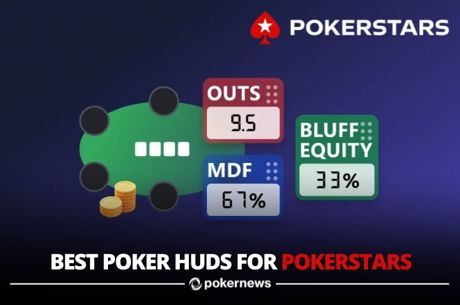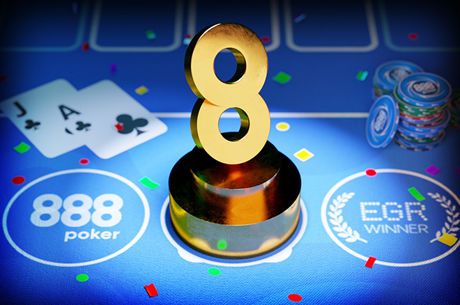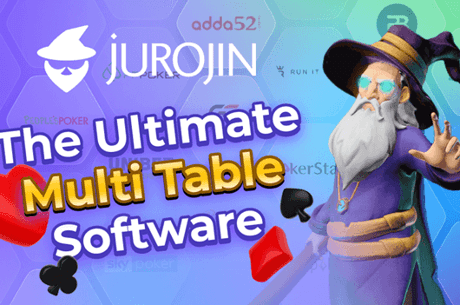Bankroll Builders, Vol. 4: Omaha Hi/Lo, Part 1

Game selection is crucial when it comes to building a bankroll. When you’re just starting off and have only a few hundred dollars in your online account, finding soft games will go a long way toward running up your balance.
The “poker boom” may be six years old, but no-limit hold’em is still by far the number-one game choice. Consequently, the competition at the NLHE tables has grown much tougher with new training sites and strategy texts constantly popping up.
These days, thousands of no-limit hold’em geniuses grind it out online every day, but at the Omaha hi/lo tables it’s still a virtual donkey farm circa 2003. If you’re looking for a lower-variance game that can be played on a shorter bankroll and have the patience to learn the finer points of split-pot poker, Omaha hi/lo could be an excellent fit.
Where can I play?
Every major online poker site offers Omaha hi/lo cash games as well as Omaha hi/lo sit-n-goes. Full Tilt Poker and PokerStars have a high volume of O8 players and it’s pretty easy to find a six-max or full ring cash game seat at virtually any hour of the day at limits from $0.25/$0.50 up to $8/$16.
Generally speaking, the O8 games on Stars play tighter than the ones on Full Tilt, especially at nine-handed tables. Cake Poker and UB also offer Omaha hi/lo, and though the game selection isn’t as plentiful, the competition is incredibly soft.
Where should I start?
The good news about Omaha hi/lo? It’s a far lower variance game than hold’em, which makes it such an excellent way to run up a bankroll. There are two ways to win the pot, and although you should always be playing hands that have a good probability to scoop, it is quite common to come away with at least half the pot if you flop a good two-way draw.
Let’s say you’re holding A♦2♣5♠Q♦ and the flop comes down J♦6♣4♦. If you hit a five, a seven, or an eight on the turn or river, you’ll have the nut low. If a three falls, you’ll have a six-high straight and the nut low, and any diamond will make you the nut flush. That’s 20 outs with two to come, and four of them, the 3♦, 5♦, 7♦ and 8♦, give you a virtual hammer-lock on a scoop.
Because the swings aren’t as dramatic in Omaha hi/lo, you don’t need nearly as large a bankroll as you do in hold’em. Split pots keep the variance down and the occasional huge scoop keeps profits up. A tight, conservative player can get started with 100 big blinds while a looser, more aggressive player might want to stick with 200 big blinds to avoid going broke. For $0.50/$1 games, have $100-$200 in your online account, for $1/$2 have $200-$400, and for $2/$4 have $400-$800.
Should I multitable?
Most pundits will tell you to stick to one table while you’re learning, which is sound advice. Once you feel comfortable with Omaha hi/lo, however, branching out to several tables can be a winning proposition. For many players, having two or three tables up at once can go a long way to alleviating boredom and improving concentration while playing online.
While playing only one table, it’s easy to become distracted and fill the time between hands by surfing the Internet, downloading music, or watching television. With two or three tables open, there’s always a hand to be played and you’re more likely to find yourself concentrating on the game in front of you rather than on updating your Facebook page.
How much can I earn?
Skilled Omaha hi/lo players can enjoy a significantly higher earn rate than their limit hold’em counterparts. When you scoop a pot in Omaha hi/lo, it is typically larger than your average limit hold’em pot, and in the long run, those extra bets really add up. While 1 to 1.5 big bets per hour is a good win rate at limit hold’em, a solid Omaha hi/lo player can make around 2 to 2.5 big bets per hour. When it comes to sit-n-goes, the top low-limit Omaha hi/lo players are enjoying a return on investment (ROI) anywhere from 5 to 15 percent higher than their no-limit hold’em opponents.
When should I move up?
Move up in limits only when you’re comfortable, or when you have 200 big blinds at the next limit. If you’re a $1/$2 player and you’ve run the $250 you started with up to $400-$500, go ahead and give the $2/$4 games a shot. If you find yourself in over your head or drop your roll back down to $250-$300, move back down.
In Part 2, we’ll get into starting hands, strategy, and more tips from the trenches. Stay tuned!
To try your hand at Omaha hi/lo, open an account at one of our online poker rooms. And why not follow us on Twitter while you’re at it?








